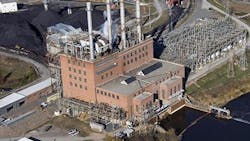Duke Energy NC coal ash spill signifies third largest in U.S. history
EDEN, NC, Feb. 6, 2014 -- On Monday, Feb. 3, Duke Energy, the largest electric power holding company in the U.S., reported that it spilled between 50,000 to 82,000 tons of coal ash into the Dan River between the city of Eden, N.C., and Danville, Va., polluting the waterway and potentially threatening public health. The spill was caused by a break in a 48-inch stormwater pipe located underneath Duke's unlined 27-acre, 155-million-gallon ash pond on Sunday afternoon, ultimately draining an estimated 24 to 27 million gallons of contaminated water into the Dan River. The occurrence signifies the third largest coal ash spill in U.S. history. Coal ash is the waste left after burning coal in a power plant. Containing heavy metals and other toxic compounds such as arsenic, boron, chromium, selenium, mercury, and lead, it is a serious threat to aquatic ecosystems and local drinking water. Further, a 2009 EPA technical report classified Duke's 53-year old Dan River ash pond dams "significant hazard potential structures." Field inspections found them leaking and their surfaces sliding.

